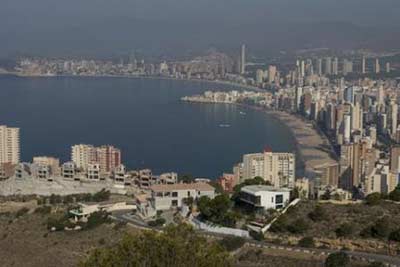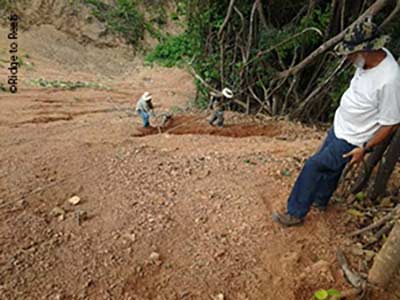In This Issue
By Amy Nelson
 One third of the world’s population lives in coastal areas, and coastal habitats not only protect these communities, but support the millions people employed directly and indirectly by fisheries and tourism. But in developing our coastal areas, modifying coastal hydrology in the name of flood protection or agriculture, using destructive fishing practices, and polluting waters that drain to the coasts, we are degrading the very ecological systems that draw us to our coasts. Unlike footprints in the sand, these anthropogenic impacts will not be easily or instantly washed
One third of the world’s population lives in coastal areas, and coastal habitats not only protect these communities, but support the millions people employed directly and indirectly by fisheries and tourism. But in developing our coastal areas, modifying coastal hydrology in the name of flood protection or agriculture, using destructive fishing practices, and polluting waters that drain to the coasts, we are degrading the very ecological systems that draw us to our coasts. Unlike footprints in the sand, these anthropogenic impacts will not be easily or instantly washed  away.
away.
And then there is climate change.
An increasing body of research–including an article published just two weeks ago in Frontiers in Marine Science–shows that coastal ecosystems hold enormous potential when it comes to climate mitigation, yet 24% of the world’s sea grass species are threatened or near threatened (IUCN), tidal wetlands in the U.S. are being lost at twice the rate they are being restored, 75% of the world’s coral reefs are at risk, 10% are already damaged beyond repair (RAMSAR), and more than one in six mangrove species are now in danger of extinction. How can we covet our coasts so much yet care for them so little?
There is good news. What began decades ago with efforts to restore salt marsh in Virginia and North Carolina has grown into the practice of coastal habitat restoration. Hundreds of agencies, organizations, and committed people around the world are now engaged in restoring coastal dunes, kelp and mangrove forests, coral and oyster reefs, seagrass meadows and salt marshes.

Every day, we learn more about coastal habitat restoration, and many experts are working hard to ensure that knowledge is passed on to new generations of restoration practitioners. We were honored to chat with two of them. Dr. Joy Zedler, Professor of Botany and Aldo Leopold Chair in Restoration Ecology, University of Wisconsin-Madison and the former Director of the Pacific Estuarine Research Laboratory at San Diego State University, is one of the world’s leading experts in coastal wetlands.

Roy “Robin” Lewis is president of the design-build firm Lewis Environmental Services, head of the non-profit Coastal Resources Group, and an internationally renowned coastal wetland restoration instructor. Both Joy and Robin generously share the wisdom and insight they have gained in studying and restoring coastal ecosystems for nearly half a century.
It is one thing to plan, conceptualize, and design a coastal habitat restoration project. It’s quite another to implement one. Don’t miss these “Do’s & Don’ts” from people who know what it’s like to be on the ground or under water installing coastal habitat restoration projects.
In her article “Nature is teaching. Are we listening?” senior ecologist Terry Doss suggests that while we wait for coastal retreat strategies to gain momentum, we must follow nature’s guidance as we attempt to restore coastal habitats.

Leaf Litter’s nonprofit spotlight shines on Ridge to Reefs, an organization that strives to protect and restore coastal ecosystems, primarily coral reefs, mangroves, and tidal wetlands by looking upland and addressing the key causes of degradation. They then build upon those efforts to enhance the policies, economies, resilience, and well-being of coastal communities.
Among the countless species that benefit from coastal habitat restoration, only one—the human—is likely to be concerned with the economic return on investment. Exactly what is socioeconomic payoff of coastal habitat restoration? Researchers who examined 50 American Recovery and Reinvestment Act-funded coastal habitat restoration projects implemented by the National Oceanic and Atmospheric Administration, have revealed some interesting answers to that question.
 The topic of coastal habitat restoration is as broad and expansive as the coasts themselves. We encourage you to explore our list of resources to learn more. The list includes publications and organizations referenced in the issue, as well as many others.We also catch you up on the latest news about Biohabitats Projects, Places and People. So join us as we explore coastal habitat restoration.
The topic of coastal habitat restoration is as broad and expansive as the coasts themselves. We encourage you to explore our list of resources to learn more. The list includes publications and organizations referenced in the issue, as well as many others.We also catch you up on the latest news about Biohabitats Projects, Places and People. So join us as we explore coastal habitat restoration.
